Imagine watching your favorite movie in your home theater with crystal-clear sound and no outside noise. That's the magic of expert soundproofing! Proper soundproofing involves more than just blocking noise; it's about creating an environment where sound quality is at its best.
From acoustic panels to specialized carpeting, professionals use many techniques to make your home theater the ultimate private cinema. And we'll walk you through each one — see how the pros (like us!) create the perfect soundproof setup for your personal movie theater!
The Foundation
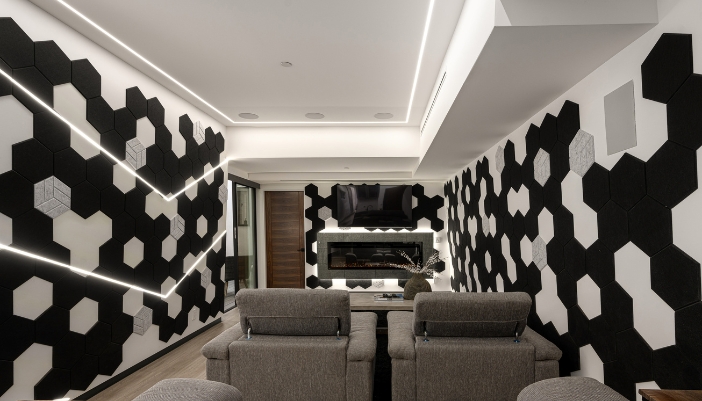
The first step in achieving a movie theater-like audio experience at home starts with acoustic panels! These panels are critical for controlling sound within your home theater, so you only hear the good stuff!
- How They Work: Acoustic panels are designed to absorb sound waves, reducing their reflection within the room. This minimizes echoes and reverberation, ensuring that sound remains clear and undistorted.
- Materials and Types: Foam panels are lightweight and cost-effective; fabric-wrapped panels offer higher aesthetic appeal and customization, while wooden panels add a touch of elegance and superior sound absorption.
- Strategic Placement: The panels are typically installed on walls and ceilings at points where sound waves are most likely to reflect. Professionals (like our custom integrators!) use their expertise to determine these spots, ensuring optimal sound absorption.
- Enhancing Sound Quality: By absorbing excess sound, acoustic panels help maintain a balanced sound environment. This lets you hear dialogue, music, and sound effects clearly without unwanted noise interference.
Muffle Magic
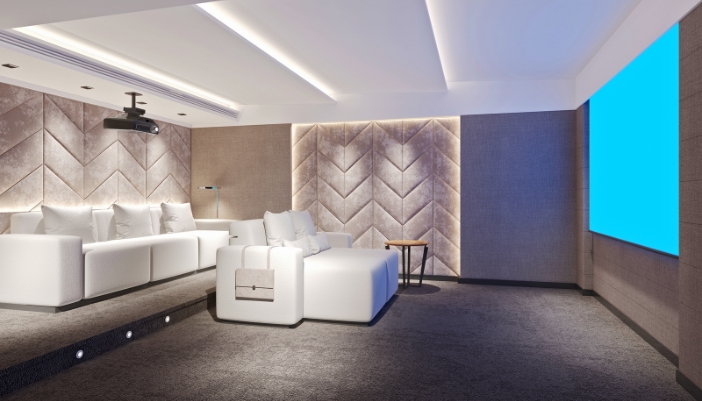
For a home theater experience that truly immerses you in the action, soundproofing your walls and ceilings is crucial. This step ensures that the rich audio stays inside your theater while unwanted noise from outside remains unheard — leaving you free of unwanted interruptions!
- Fiberglass Insulation is used within walls and ceilings, effectively trapping sound waves and reducing sound transmission.
- Mineral Wool Insulation is denser than fiberglass and offers superior soundproofing between rooms and fire-resistant properties.
- Double-Stud Wall Construction involves building two sets of studs with a gap between them, creating a buffer zone that significantly reduces sound transfer and enhances sound insulation!
- Resilient Channels attach to the studs in walls and ceilings and help decouple drywall from the structure, minimizing sound transmission through the building.
- Acoustic Sealant and Weatherstripping around doors, windows, and any gaps or cracks ensure no weak points for sound to escape or enter. This step is essential for creating an airtight sound barrier and preventing noise leakage.
Pro Tip:
When selecting and installing the proper insulation, leave it to the custom integrator (aka us!); we have the expertise to set everything up to maximize the soundproofing!
Blocking Distractions
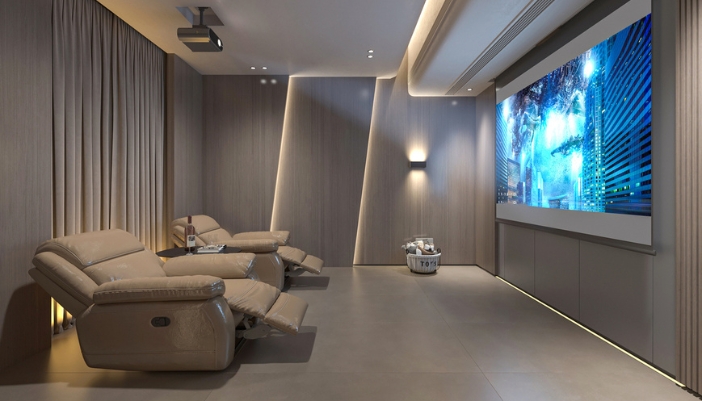
Another key place to keep out unwanted noise in your home theater is the windows and doors! These elements are often the weak points in soundproofing, but with the right solutions, they can be transformed into practical barriers that enhance your viewing experience.
- Solid Core Doors: These doors are dense and heavy, significantly reducing the amount of noise that can pass through compared to standard hollow doors. Their solid construction is essential for blocking sound from entering or leaving the room.
- Door Seals and Sweeps: Acoustic door seals and automatic door sweeps ensure a tight seal around your doors. These components close gaps that might let sound escape or enter, creating a continuous sound barrier and preventing noise leakage.
- Soundproof Windows: Double-glazed and laminated glass windows have multiple layers that dampen noise, and maintain the acoustic integrity of your home theater.
- Blackout Curtains: These curtains block light and add an extra layer of sound insulation. They absorb sound and reduce noise entering through the windows.
- Smart Home Integration: Smart home technology can further enhance your soundproofing efforts. For instance, smart sensors can detect when you start a movie and automatically lower your blackout curtains, adjust lighting, and even activate white noise machines to ensure the optimal viewing environment.
Flooring It
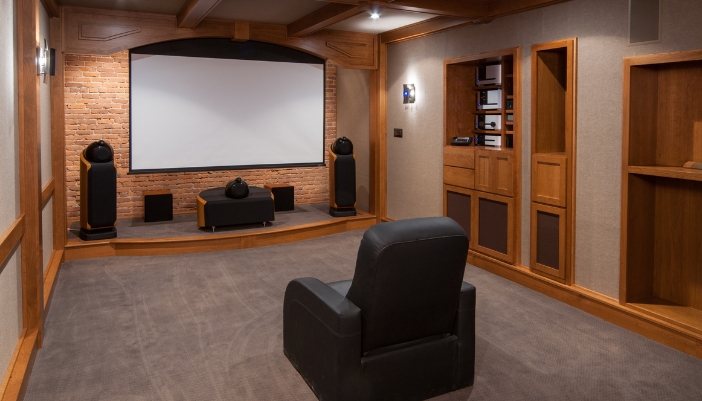
For a truly immersive home theater experience, the right flooring, can make all the difference!
- Sound Absorption: Carpeting absorbs sound waves, reducing echoes and reverberation. This keeps dialogue, music, and sound effects clear and undistorted, providing a better listening environment.
- Acoustic Underlays: Placed beneath the carpet, acoustic underlays add an extra layer of sound insulation. They are designed to absorb impact noise, like footsteps, preventing it from traveling through the floor.
- Floating Floors: This advanced technique involves laying a floor over cushioning material, such as foam or rubber, without attaching it directly to the subfloor. Floating floors help isolate sound and vibrations, preventing them from traveling through the structure of your home.
- Material Choices: The type of carpet and underlay you choose can significantly impact soundproofing. Thicker, denser carpets and high-quality underlays offer superior sound absorption. Materials such as wool and nylon are particularly effective due to their durability and acoustic properties.
Pro Tip:
Carpeting might cause dead spots, but integrators like us can strategically place diffusers and additional acoustic treatments to ensure the sound remains evenly distributed throughout the room!
It's a Trap!
Love those deep, rumbling bass notes in your favorite movies? Without proper control, they can overpower everything else. That's where bass traps come in — they're designed to absorb low-frequency sound waves that accumulate in the corners and edges of a room to avoid a muddy and overwhelming audio experience!
- Types of Bass Traps: Foam traps are lightweight and easy to install, while panel traps offer superior absorption. Corner traps are designed to fit into room corners, where bass buildup is typically the highest.
- Strategic Placement: Integrators place these traps in corners and walls where low-frequency sounds are most problematic. This strategic positioning helps to evenly distribute and absorb bass, preventing it from overpowering other frequencies.
Tune In to the Action!
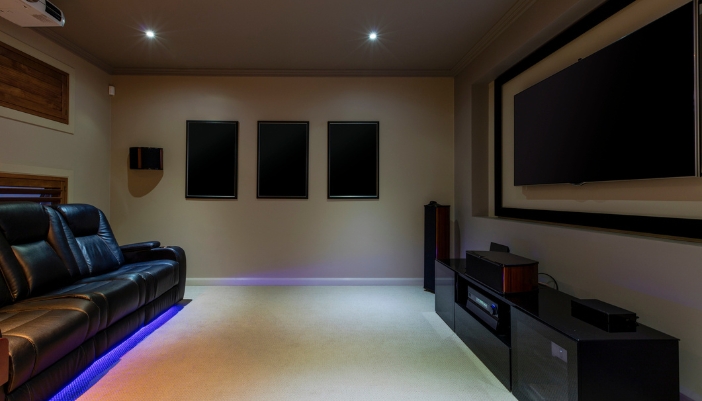
Ready to turn your home theater into a private cinema? With expert soundproofing techniques like acoustic panels, insulated walls, and smart carpeting, you can enjoy movies in perfect peace. All you have to do is let the pros at Pflanz Electronics work our magic and create the custom home theater of your dreams!
Give us a call or stop by today to set up your appointment — your blockbuster experience awaits!